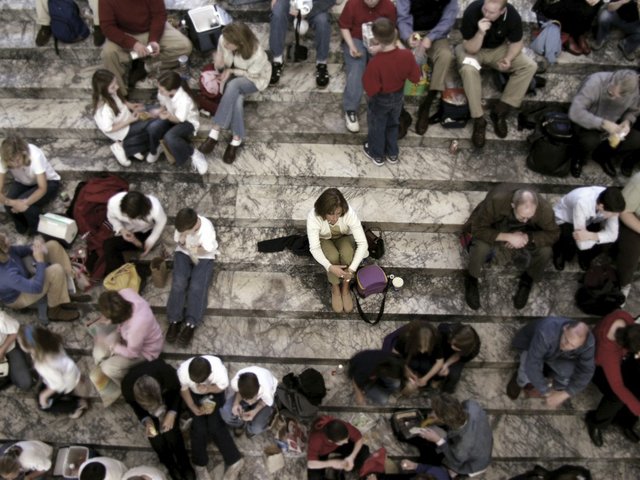Hikikomori: The Beginning of Social Withdrawal
Sociology has been always interesting for me. Thanks for it we can determine the prospects of human development, and understand the implications of decisions and actions, which have been done by different communities and had an influence on the nation or even on all over the world.
In this article I will briefly describe the phenomenon of the Hikikomori (you will learn who is it) from the social perspective in the first place. Later, in other articles, I will use a reference to this post, so you can better understand the meaning of certain social experiments and their implications for our society.
In the early 90s a young Japanese psychiatrist Tamaki Saito has noticed the increase of complaints from parents on children, who abruptly, without any apparent reasons locked in their rooms. This kids didn't want to do anything and communicate with others people. It wasn't a short-term self-isolation, parents have been consulted to the doctors after several months of this behavior. Some teenagers were in isolation for several years already. They left the room only for wash (once a month or less), opened the door only for take a food left by their parents, day by day didn't show any activity, could sit quietly in the room looking at the wall.
Saito has begun to explore this phenomenon and found that the first mention of such a behavior appeared in 1970s. Saito introduces the term Hikikomori (Hiki), which in Japanese mean "being in solitude", "pulling inward, being confined" in fact it was the acute social isolation. It was difficult to collect accurate information about the number of such cases, given the traditional closeness of Japanese families, their unwillingness to consult the psychologists, fearing to disgrace their family in the eyes of society.
Saito suggested that hikikomori take 1% of the population (1.2 million people). In 2010, the government of Japan said that country's population counts of 700.000 official hikikomori (we all know that the government likes to reduce the negative digits).
Please, don't confuse the concept of hikikomori with more modern terms as Otaku, NEET ("Not in Education, Employment, or Training" in Europe) and Basement dwellers (USA). The latest don't break contacts with society, they restrict their area of movement, and refuse from fulfillment of social functions, but not from communicating with the world. Often create social connections in WEB, communicate on the forums and in the games. They have more similarities with agoraphobia patients than with hikikomori. Hikikomori fully suspended from the world.
Why have Hiki appeared in Japan? Limitations in armaments after the Second World War allowed to the country to develop economic and social aspects of society. We all know that today Japan is the most developed country in technology, economic stability for the population (the absence of inflation a few last years) and therefore social welfare. Unemployment benefits allows a nice place to live. The average life expectancy is 76 years (men) and 82 (women). That allows family to create a good savings and provide financial support to offspring (Hiki). The high population density given the advanced technologies generate many social phenomena, which later spread all over the world. Popular trends from Japan first apply to USA and Europe, precisely because of their (countries) level of social and economic development is closest to Japan.
Hikikomori are not the result of a mental disorder, they are "children" of sociology, first of all. Due to population density and life expectancy all social roles already busy, people don't have sufficient motivation to work (because your work will not bring any benefit, it will be work for work's sake), thus it is impossible to self-determination. They don’t see any point to spent their time and power to achieve the requirements of modern society. The person ceases to see the meaning of her presence in the circle of society. At the time of detection by Dr. Saito hikikomori, their average age was 21 years, now for 32 years.
According to the government of Japan, 1.5 million people are on the verge of becoming a Hiki. This means that people choose this style of existence after attempts to become a part of society when they are already adults, not teenagers with no experience, as it was in the beginning of phenomena.
Important point: more than 90% of Hiki - men. Why? Because for woman is much easier to determine her social function-through the birth of children. Hikikomori is it's not eternal curse, it sometimes happens that after a few months or years, the man returns to society. But documented cases of 20 years of self-isolation.
Although I wrote above that Otaku, NEET and basement dwellers are not Hikikomori, they (at the same time) display the same social problems that Hiki. Thereby indicating a serious problem of human development:
the number of required social roles, considerably less than the number of people able to occupy these roles. We have faced with overcrowding, not only in physical but also in mental terms.
In the next article I'll tell with what consequences of this phenomenon we may face in the future.


I feel like there are a lot of people in Japan dealing with mental issues and it almost seems the way they have been brought up is very strict and seems to put a lot of pressure on them to perform well in school from an early age.
You are right. So we can look on it like on one of the variants of our future, because Japan going forward of all other countries in social develop.